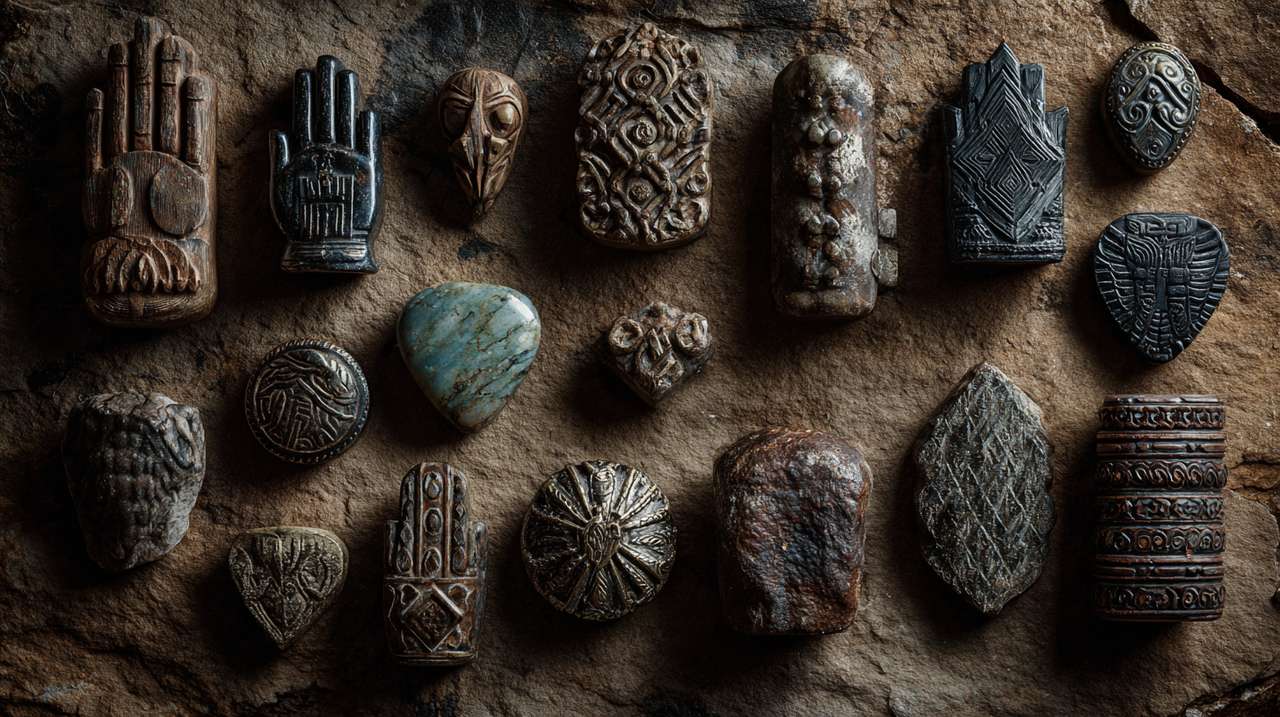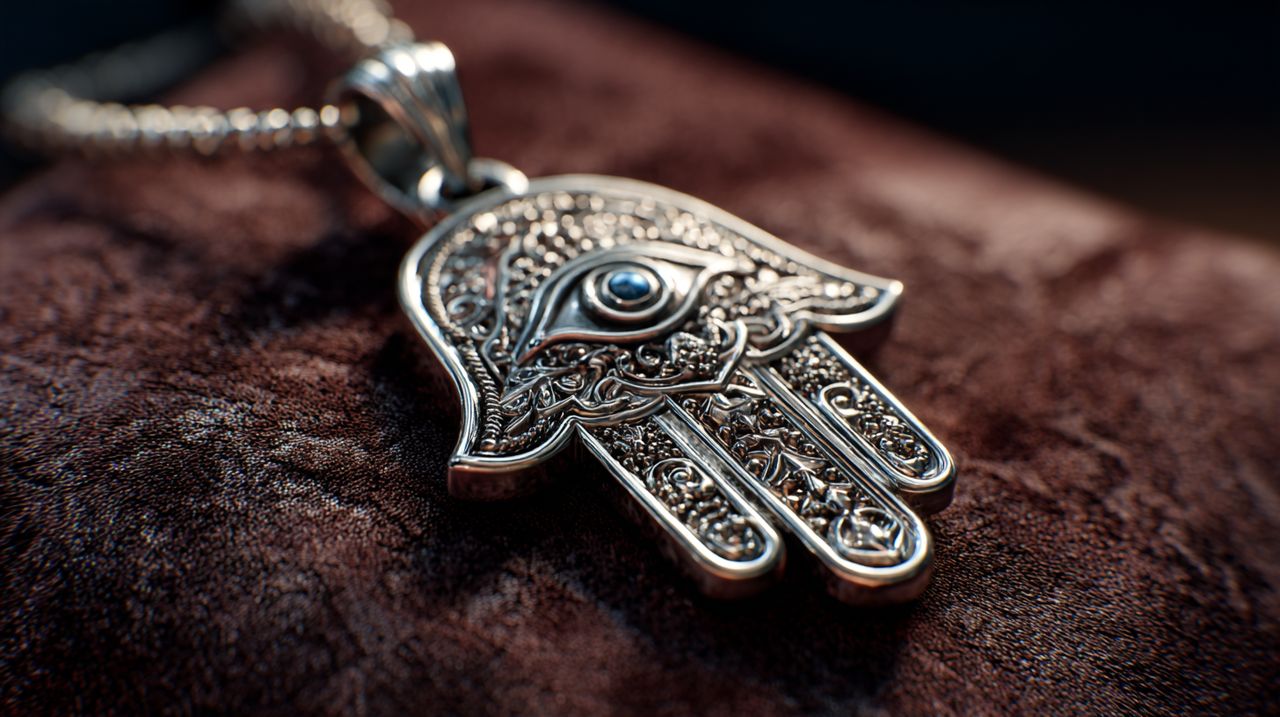The Ultimate Guide to Hand Protection Symbols: Decoding Ancient Wisdom Across Cultures
From the primal etchings of ancient caves to the intricate adornments of modern jewelry, one symbol consistently emerges as a universal guardian: the human hand. This pervasive presence is not accidental; it reflects a profound, shared human need for security and spiritual well-being, an intuitive wisdom woven into the very fabric of countless civilizations. In this definitive guide, we delve beyond the surface of these powerful emblems, dissecting their historical evolution and cross-cultural resonance to reveal the deep psychological and philosophical underpinnings that make them enduring talismans.
The Hand: A Universal Emblem of Protection
The enduring role of the hand as a protective emblem transcends mere cultural coincidence. It represents a profound, deeply ingrained expression of human consciousness, echoing a fundamental desire for safety and spiritual assurance. Its consistent appearance across artifacts, rituals, and traditions underscores a shared, intuitive understanding of its inherent power.
Primal Origins: The Hand as Instinctive Guardian
Consider humanity’s earliest ancestors. Their hands were immediate instruments of survival: shielding against predators, building rudimentary shelters, or foraging for sustenance. This direct, visceral engagement with the world established the hand as the primary tool for both defense and sustenance, imbuing it with an intrinsic connection to safety and provision.
From these essential physical acts, the hand’s symbolic resonance emerged. Anthropological studies reveal how this primal, physical act of safeguarding evolved into a potent symbolic representation. The hand, being so intimately involved in the very act of survival—from fending off danger to crafting tools—naturally became synonymous with security and well-being, solidifying its status as a fundamental guardian.
“The hand, as a primordial symbol, does not merely represent protection; it embodies the very will to protect, a psychological imprint that predates linguistic expression and resonates with our deepest instincts for survival and communal harmony.”

From Gesture to Icon: The Symbolic Evolution
Over millennia, these fundamental protective gestures underwent a profound metamorphosis, evolving into enduring, iconic representations. The hand, once a direct instrument of defense, became depicted on charms, amulets, and intricate carvings, each imbued with profound spiritual and cultural significance. These symbolic forms transcended their literal function, transforming into potent talismans believed to shield against both visible and unseen threats.
This transition highlights a remarkable human capacity: the ability to abstract primal actions into powerful cultural artifacts. It reflects a cognitive leap where concrete experience is transmuted into abstract meaning, creating symbols that resonate across epochs and diverse civilizations.
Iconic Hand Symbols: A Comparative Analysis
Across the globe, distinct hand protection symbols have emerged, each a unique cultural articulation of a universal human need. While their forms and specific mythologies vary, they converge on a shared, potent purpose: safeguarding. This section delves into some of the most prominent examples, dissecting their unique narratives and the broader cultural significance they embody, reflecting the protective qualities often sought in adornments such as Tibetan pendants Tibetan Pendants: A Guide to Their History, Symbolism, and Beauty.
The Hamsa Hand: A Cross-Cultural Guardian
Among the most globally recognized hand symbols is the Hamsa, a prominent amulet deeply rooted in Middle Eastern traditions. Known as the Hand of Fatima in Islamic cultures and the Hand of Miriam in Jewish heritage, its fundamental purpose remains consistent: to ward off the evil eye and attract blessings, strength, and prosperity. However, understanding its nuances requires appreciating the subtle distinctions in its interpretation and application.

While both traditions share its protective essence, the Hamsa’s symbolism gains depth through its specific cultural lenses. In Islamic contexts, the five fingers are often associated with the Five Pillars of Islam or the family of the Prophet. In Jewish tradition, the five fingers may represent the five books of the Torah or the protective divine hand. Furthermore, design variations exist; some Hamsas feature a central eye motif (believed to deflect negative energy directly), while others emphasize calligraphic elements or specific finger alignments, reflecting localized artistic and spiritual expressions.
Buddhist Mudras: Embodied Spiritual Guidance
In the profound spiritual traditions of Buddhism and Hinduism, Mudras are not merely symbolic hand gestures; they are precise, embodied expressions that convey particular meanings, evoke specific mental states, and facilitate meditative practice. Each Mudra acts as a conduit for spiritual energy and intention.
The Abhaya Mudra, often translated as the ‘gesture of fearlessness’ or ‘dispelling fear,’ exemplifies this. Typically depicted with the right hand raised, palm outward, and fingers extended, it signifies protection, peace, and reassurance. Beyond its protective aspect, the Abhaya Mudra is a profound spiritual teaching: it represents the Buddha’s courage in overcoming obstacles and confronting fear, guiding practitioners to cultivate inner tranquility and unwavering resolve in their spiritual journey. It’s a gesture that not only offers protection but also inspires it from within.
Divine Blessings: Hands in Abrahamic Traditions
Within the Abrahamic faiths—Judaism, Christianity, and Islam—hand gestures carry profound symbolic weight, often serving as direct conduits for divine power and grace. They are not merely physical movements but sacred acts that bridge the human and the divine.
In Christianity, specific hand positions are integral to blessings, sacraments, and iconography, signifying spiritual authority and the transmission of divine favor. Similarly, the ancient Kohanim (Priestly) Blessing in Judaism employs a highly distinctive hand gesture, where fingers are split to form the Hebrew letter Shin, believed to channel divine protection and blessing directly to the congregation. These gestures underscore a core belief: that the hand can be an instrument through which spiritual safeguarding is bestowed upon individuals and entire communities, reflecting a profound sacred connection.
Global Echoes: Folk and Indigenous Interpretations
Beyond the structured doctrines of major religions, an expansive tapestry of folk and indigenous hand protection symbols beautifully reinforces this universal theme. These localized expressions often carry centuries of oral tradition and community belief.
In Europe, examples include the Italian Mano Fico (fig hand) and Mano Cornuta (horned hand), traditional gestures and amulets employed to deflect evil and bring good fortune. Further afield, many African indigenous cultures incorporate intricate hand motifs in their masks, textiles, and rituals, symbolizing ancestral guardianship, spiritual connection, and the power to repel negative forces. For instance, some West African traditions feature hand symbols representing the protective force of ancestors or specific deities. These diverse forms, though culturally distinct, consistently address a fundamental human need for protection, reflecting a shared psychological landscape that unites humanity, much like the enduring symbolism and protective qualities found in traditional jade bracelets Jade bracelet chinese meaning: An Enduring Emblem of Heritage and Protection.
Beyond Symbolism: The Hand’s Enduring Psychological Resonance
The enduring power of the hand as a protective symbol stems not merely from its historical prevalence, but from its profound connection to the human psyche and its remarkable capacity to adapt its meaning across epochs. This section explores the deeper psychological mechanisms at play.
The Human Psyche: Innate Protective Associations
The hand transcends its utilitarian function as a mere tool; it is an intrinsic extension of self, an instrument of agency, and a primal source of comfort. These innate qualities imbue it with significant symbolic power related to protection, security, and well-being. From a cognitive perspective, the hand’s direct involvement in our interaction with the environment—grasping, pushing, nurturing—forges a deep mental association with control and influence.
Psychologically, the hand inherently represents action, intention, and connection. Its capacity to shape, to shield, and to gesture makes it a potent mental conduit for protective energy. This isn’t just cultural conditioning; it taps into deeper archetypal patterns, where the physical act of protection, performed by the hand, becomes inextricably linked to our internal sense of safety and empowerment.
“In a world of inherent uncertainty, the hand protection symbol functions as a profound psychological anchor. It does not merely ward off external threats, but rather, it externalizes an internal resolve, serving as a tangible manifestation of our innate human capacity to seek order, imbue meaning, and cultivate resilience against the unpredictable currents of existence.”
Modern Resonance: Reinterpreting Ancient Wisdom
Even in our technologically advanced era, hand protection symbols continue to resonate profoundly. Their presence is ubiquitous—from intricate jewelry designs and contemporary art installations to deeply cherished personal amulets. They serve as compelling bridges, seamlessly connecting ancient belief systems with a modern appreciation for cultural heritage and individual meaning.

Many individuals choose to wear a Hamsa pendant or incorporate a Mudra into their daily practice not solely for their traditional protective attributes, but as potent reminders of inner strength, cultural continuity, and a timeless human quest for holistic well-being. This enduring appeal speaks to the symbols’ adaptable nature, allowing them to be reinterpreted as expressions of personal identity and spiritual alignment, a sentiment mirrored in the ancient wisdom and micro-rituals associated with the red string bracelet Meaning Red String Bracelet: A Guide to Its Ancient Wisdom and Micro-Rituals.
Concluding Insights: The Hand’s Enduring Legacy
Our exploration of hand protection symbols reveals a compelling truth: the hand, in its myriad symbolic forms, functions as a universal guardian. It embodies humanity’s continuous quest for safety, spiritual well-being, and a sense of divine favor, seamlessly transcending geographical and cultural divides.
From the earliest, instinctive gestures to the most intricately crafted amulets, these symbols are profound reflections of our collective hopes and anxieties. They serve as potent reminders of our innate connection to archetypal forces and a shared human experience that spans millennia. Deciphering these ancient forms of wisdom enriches our understanding of the intricate tapestry of human symbolism and the ongoing dialogue between humanity and its protective iconography.
For those seeking to engage with this enduring wisdom, a deeper investigation into the unique narratives and profound meanings embedded within various hand symbols offers not only personal insight but also a tangible link to a universal human experience—a journey beyond superficial aesthetics into the very essence of human protective instinct.
💡 Frequently Asked Questions
The article explores the human hand as a universal symbol of protection, tracing its deep historical roots and enduring significance across diverse cultures.
The hand's status as a primal guardian comes from its instinctive use by early ancestors for defense, shielding from threats, and offering gestures of peace and blessing. Its direct involvement in survival, like building shelters and gathering food, naturally associated it with safety and protection.
Prominent hand protection symbols include the Hamsa Hand (Middle Eastern, known as Hand of Fatima or Miriam), Buddhist Mudras (like the Abhaya Mudra for fearlessness), hand gestures in Abrahamic traditions (Christian blessings, Jewish Kohanim blessing), and folk symbols like the Italian Mano Fico or Mano Cornuta.
Hand protection symbols continue to resonate deeply today, appearing in jewelry, art, and personal amulets. They bridge ancient beliefs with contemporary appreciation, serving as powerful reminders of inner strength, cultural connection, and a timeless quest for well-being.








